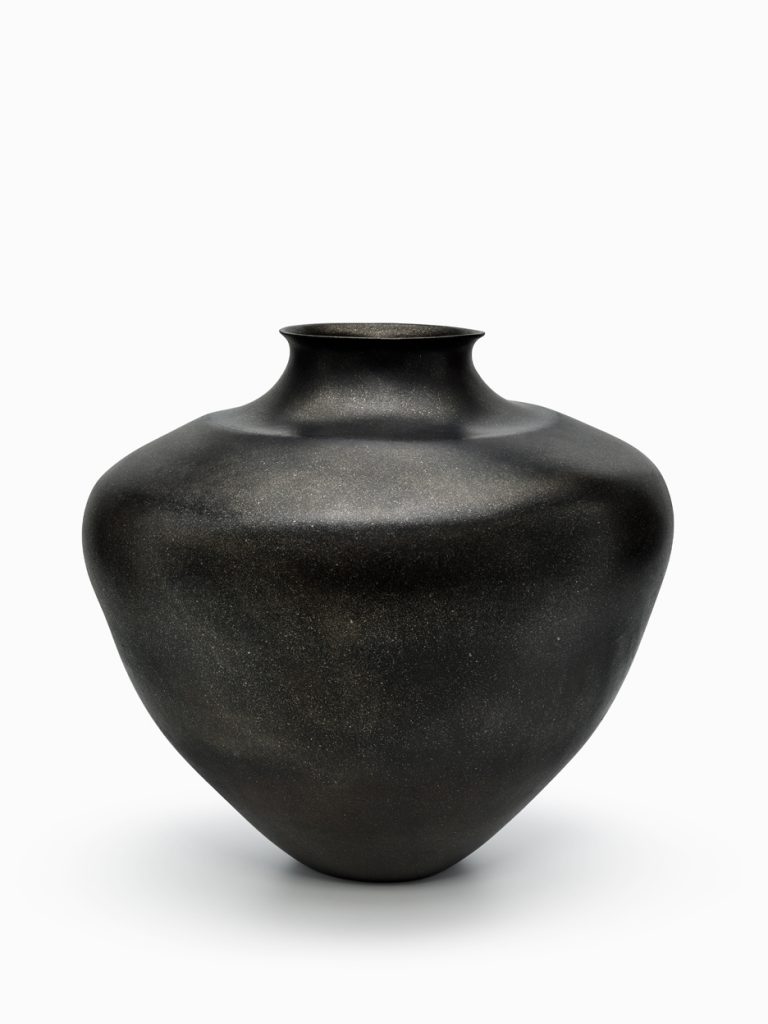Nora Naranjo Morse
Santa Clara Pueblo
Curator Nora Naranjo Morse (Kha’p’o Owingeh/Santa Clara) is a student, elder, and builder of things.
Nora chose the following for the Grounded in Clay exhibit:
When the Clay Calls
When the clay calls, there is no denying it—ask Lonnie Vigil. It is the kind of call you feel rather than hear. And it can happen anytime, anywhere, even if you live in a city, which Lonnie did when he heard the clay calling. Maybe it was just time for Lonnie to come home.¹
Like other Pueblo potters, Lonnie grew up knowing the kind of hard work, skill, and absolute commitment it takes to make pottery. Women in Lonnie’s family taught him these facts. The clay process—harvesting clay veins, processing materials, sifting and mixing, coiling and shaping—is months of work from start to finish. But it is more than a method or process; clay work speaks to the profound relationship between a potter and clay, and the women in Lonnie’s life knew that as well. Lonnie Vigil is guided by that relationship to clay. You hear it in his voice and see it in the vessels he makes. His unyielding devotion to every single facet of the clay process is rooted in a cultural worldview that evokes reverence for the sky and earth. Inspired by cultural knowledge passed down from his Pueblo ancestors, Lonnie’s undeniable gift can be seen in every single vessel he has ever made. This one in particular—this is the grandfather vessel.
When a clay form is centered, the potter knows it early on; it is a feeling, a knowing of balance that begins at the very first coil.
The base of Lonnie’s grandfather vessel is surprisingly small, but it supports the clay wall, which fans out dramatically toward the hips of the form. And this is where the magic is created: the wall at the hips takes a sharp turn toward the opening of the vessel. The clay coils are layered, suspended in graceful movement toward the neck. This architectural feat is made more poignant by the fact that it is balanced by hand and feel—not by a machine, but by hands that moved in absolute concert with material.
Lonnie’s vessel has been pit-fired black with a micaceous slip finish that glitters like a thousand stars suspended in a clay sky. Lonnie’s approach to creating comes from the women who taught him the facts about clay work, but the clay opened the door to his gift.
Do not forget: Lonnie built his monumental vessel on his kitchen table. Who does that? A master artist with passion, that’s who.
When Lonnie heard the clay calling him, he came home. How lucky for all of us that he did.
1 Lonnie Vigil was working in finance in Washington, DC, before he moved back home to Nambé Pueblo to focus on pottery-making.

